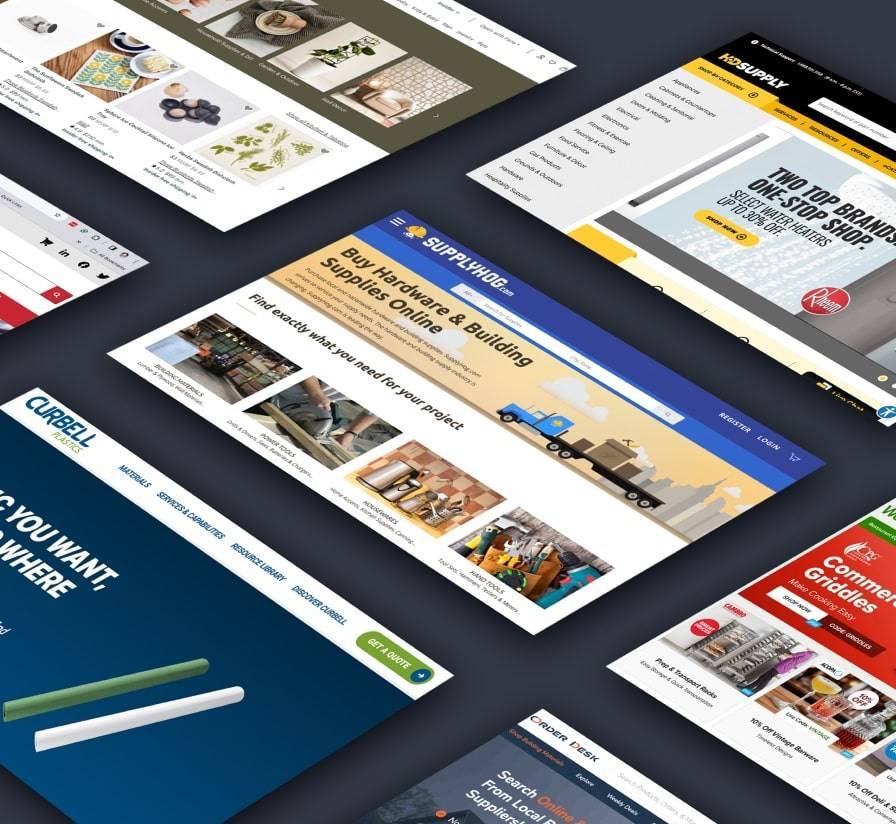

6 Pillars to Successful Web Design
The web is primarily a visual medium. When visiting a website for the first time, we rely on an abundance of visual cues to instruct us on what actions to take, what buttons to click, and what content to read. Too often though, people place the appearance of their website on a pedestal, and fail to consider the other components that are vital to a website's success.
If we think of a website like a house, then nice looking windows, landscaping and paint, can make for good curb appeal -- but if the foundation cracks in a few years, or the builder used sub-standard lumber, we have serious questions as to the home's viability as a home and an investment. Although these "hidden" problems may not be apparent to the casual observer, or without the help of an inspector, they are in many ways more important to the long term investment of that home than the actual appearance.
This fact is also true with websites. Appearance is certainly an important factor, but when planning your next website, consider these 6 additional pillars. They can make the difference between failure and success.
Content is king. Google will rank your site based on the quality of your site's content -- and that content should be fresh, relevant and meaningful so that it stands out.
Web sites are dynamic entities. You don't create one, then walk away. They should grow, change, adapt easily and readily to the changes in the world around us. This will mean adding new content, updating old content and removing content as it is no longer needed.
This is typically done with a Content Management System. We provided some insights into the more common CMS's back in May. Content Management Systems should be tailored to their clients so that the updating can be done with a minimum amount of fuss. Clients with proper training and sophistication should be be given more sophisticated tools so that they have more control over content. Conversely, clients with less sophistication might be given more limited measure of control, and thus rely on a trusted advisor to guide them.
How much traffic can your site handle? If you get real successful, you can always start throwing hardware and other resources at the problem, but a properly architected site will ramp up more readily and at lesser cost. Proper caching of page content and other techniques are often better realized before a high load situation than after.
There are two things to consider here ... First, make it easy for anyone to find what they are looking for, and secondly, make sure those with impairments are not left out. A properly laid out site will make the most important content easy to find for everyone, including non-human visitors such as search engine spiders. Having good built-in search tools is a must too. And all this should be just as accessible no matter who you are or what browser you are using. For those with disabilities, the HTML content should be done such that the content is readily available to those who have to use specialized browsers.
Over the lifetime of a site, you might want to add new features or expand existing features. Is this going to be a nightmare with a high price tag, or have you built your site such that adding components does not break the bank? Thinking and planning 5 steps in advance, will often save you the trouble of having to scrap your entire previous solution.
If your site is around for awhile, it will need to be updated occasionally. This might be tweaks to existing features, or enhancements for marketing purposes, but most definitely you will want to implement security updates as they become necessary. Changes to the existing site should be relatively painless. Again, a properly architected site, using a modern web framework, should be easy to update and keep secure. An easy to maintain site, will cost less over the long haul. That's an expense that should not be overlooked.
Assuming we want to attract visitors, we need to successfully have a plan for marketing our site. A proper marketing strategy should begin with a comprehensive content strategy -- where we determine what specific areas of content are desired by users and search engines. From there, we need to ensure that the website is optimized with SEO best practices in mind. This includes writing meta titles, meta descriptions, and an expansive internal linking structure.
Marketability also speaks to your website's social media efforts. How will you grow your brand and your fanbase? Both of these questions need to be answered before you can really ever expect to have a successful website.
The bottom line is that there is a lot more going on under the hood than might meet the eye. A big part of our job at DBS is to make sure the foundation and studs behind the walls do what they are supposed for the lifetime of the house you are building.










